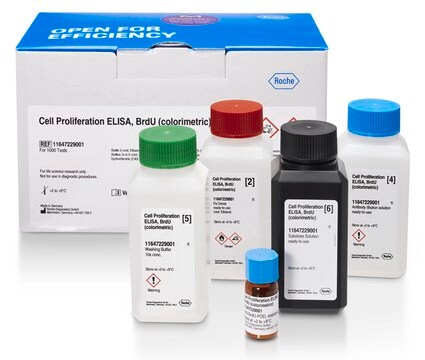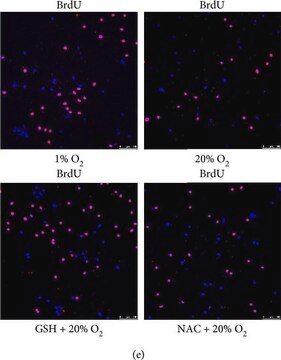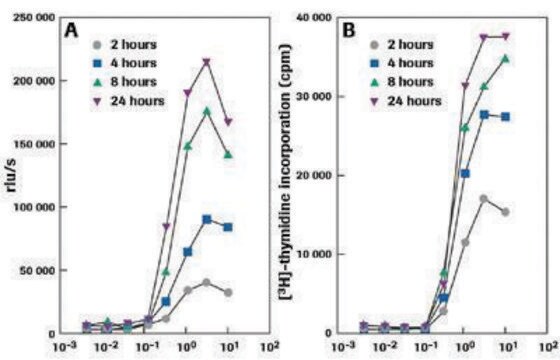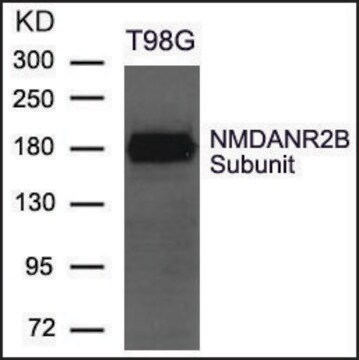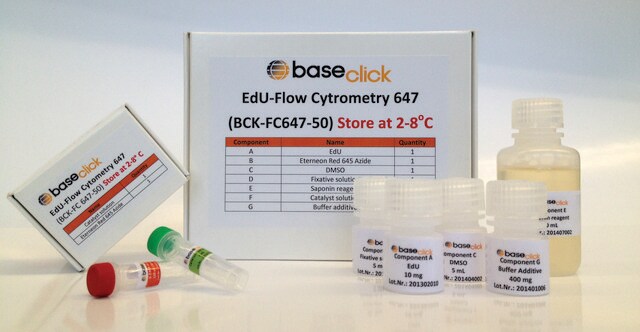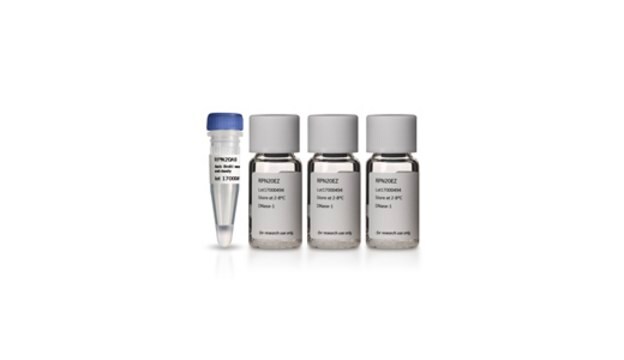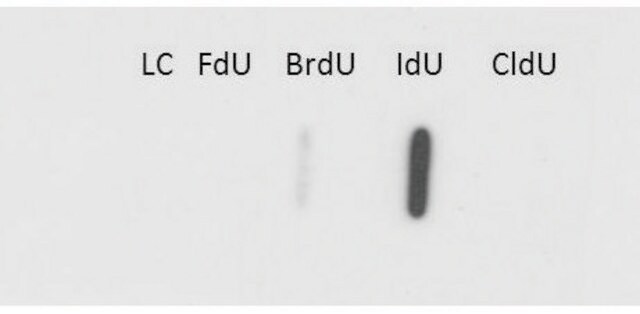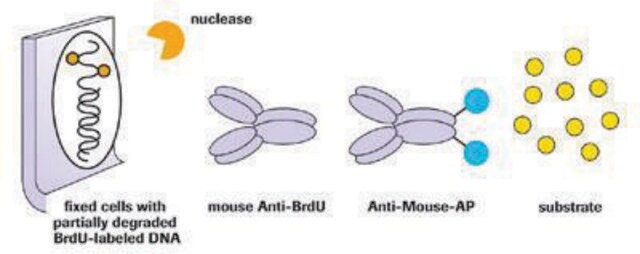11170376001
Roche
Anti-Bromodeoxyuridine
from mouse IgG1 (clone: BMC9318)
Synonyme(s) :
anti-BrdU, antibody
About This Item
Produits recommandés
Source biologique
mouse
Niveau de qualité
Conjugué
unconjugated
Forme d'anticorps
purified immunoglobulin
Type de produit anticorps
primary antibodies
Clone
BMC9318, monoclonal
Pureté
90% (HPLC and SDS-PAGE)
Forme
solution
Conditionnement
pkg of 50 μg (500 μl)
Fabricant/nom de marque
Roche
Isotype
IgG1
Température de stockage
−20°C
Description générale
Spécificité
Immunogène
Application
- Flow cytometry
- Immunohistocytochemistry
- Cryosections
- Paraffin sections
Qualité
Caractéristiques
No. of tests: 250 (Flow cytometry)
Forme physique
Notes préparatoires
Working concentration of conjugate depends on application and substrate. Dilutions should be made in PBS (pH 7.4) containing 0.1% BSA to maintain stability of the antibody.
Remarque sur l'analyse
No cross reaction to any endogenous thymidine or uridine.
Cross reactivity with 5-Br-UTP has not been tested but it is suggested that there is a good chance for reaction, because the only difference is an absent hydroxyl group on the ribose distal to the bromine substitution.
Autres remarques
Vous ne trouvez pas le bon produit ?
Essayez notre Outil de sélection de produits.
Code de la classe de stockage
12 - Non Combustible Liquids
Classe de danger pour l'eau (WGK)
nwg
Point d'éclair (°F)
No data available
Point d'éclair (°C)
No data available
Certificats d'analyse (COA)
Recherchez un Certificats d'analyse (COA) en saisissant le numéro de lot du produit. Les numéros de lot figurent sur l'étiquette du produit après les mots "Lot" ou "Batch".
Déjà en possession de ce produit ?
Retrouvez la documentation relative aux produits que vous avez récemment achetés dans la Bibliothèque de documents.
Les clients ont également consulté
Notre équipe de scientifiques dispose d'une expérience dans tous les secteurs de la recherche, notamment en sciences de la vie, science des matériaux, synthèse chimique, chromatographie, analyse et dans de nombreux autres domaines..
Contacter notre Service technique